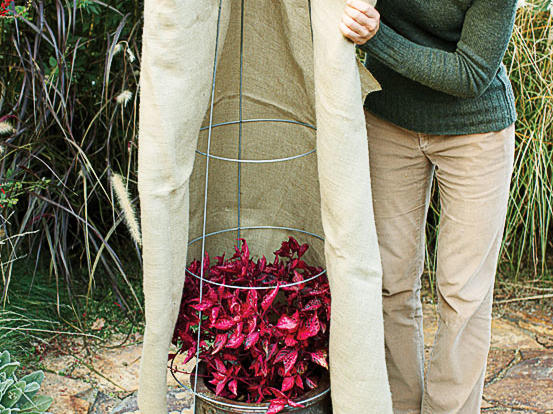
December

Rob D. Brodman
Plant
Plant bare-root or containerized deciduous fruit trees. Apples, apricots, peaches, and pears require a fixed amount of exposure to cold tempera- tures (known as chill hours) in order to blossom and set fruit. In low-desert areas, such as Phoenix, select low-chill varieties (ones that need fewer than 250 chill hours). Find suitable fruit trees at ag.arizona.edu/pubs/garden/az1269.
Maintain
Prune dormant grapevines by the end of the month. Grapes will produce fruit only on new wood that grows from last year’s canes, so they need to be pruned severely every year for maxi- mum fruit production.
Record your winter lows. Microclimates can cause certain areas to be cooler or warmer than reported temperatures in those general locations. Track air temperatures throughout the winter to get an idea of what to expect in your garden when chilly weather is forecast.
Remove the foil or plastic around gift poinsettias to ensure good drainage. Let the top inch of soil dry out between waterings, and be sure to water only the soil, not the leaves. Give the plant five to six hours of filtered sunlight per day; keep it at 70° to 80° during the day and 50° to 60° at night.
Protect
If you get caught on a cold night without enough frost cloth for plants, improvise: Wrap the trunks of young citrus trees with holiday lights to generate warmth and then cover with old cotton sheets to retain warmth. For lower growers, try newspaper or over- turned cardboard boxes. Drape the fabric, paper, or cardboard all the way to the ground and secure it around the plant to collect radiant heat from the earth.
Avoid pruning frozen stems on plants such as bougainvillea. Dead branches can help protect the interior of frost-tender plants from damage in cold weather.
